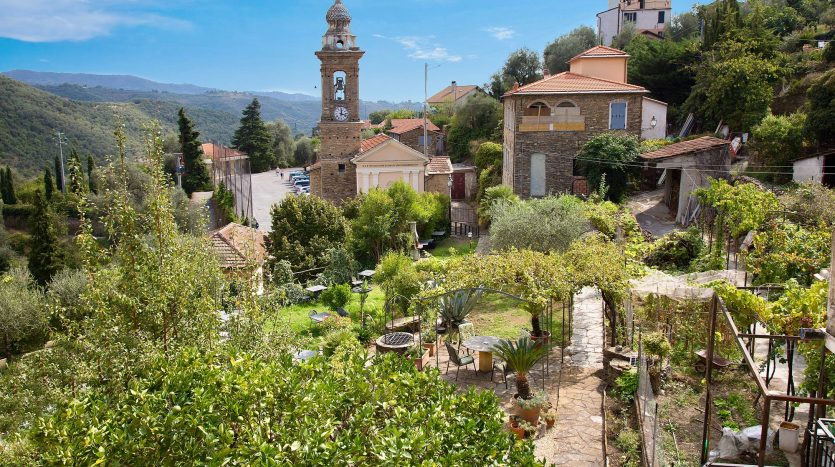TERRA ITALIA Newsletter No 3 | 2020
Dear Readers and Fans of Liguria,
Autumn is upon us and I hope you have managed to stay well and healthy over last few months. You may even wonder about news from autumnal Liguria.
With this newsletter, we want to bring you many culinary and cultural tips and trigger your interest in the events and excursions this colourful season holds for you.
Our title story focuses on the village Taggia and its history. Having recently rediscovered this small town for myself, I feel it is certainly worth a visit and would like to share my impressions with you.
Autumn always sees the launch of many exciting new properties ranging from charming Rusticos and olive groves to historic townhouses and flats and I invite you to browse through our web page. In our section ‘Good to know’ we take a look at the history of Liguria’s traditional architecture.
We are looking forward to hearing from you.
Kind regards,
Peggy Peters

Taggia is a picture perfect small medieval town in the Ligurian Hinterland, some 5 km away from Sanremo and situated on the river Argentina, locally known as Fora di Taggia. The town dates back to Roman times and traces of its origin can be found all over the Taggia of today. The narrow cobblestone mews, the arches, monuments and stone portals adorning the ancient buildings are dotted around the castle with its two historic towers still standing tall.

For centuries Taggia has been rich in treasures, palaces and artefacts, making it highly attractive to Saracen pirates. Legend has it that the Patron Saint Benedikt Revelli came up with a cunning plan to protect Taggia against the Pirates. Large bonfires made up of hollowed bamboo sticks stuffed with gunpowder, were started all over the town. They were clearly visible from afar, giving pirates the impression this town had already been ransacked and was not worth bothering with. To this day celebrations featuring ancient costumes are held every February all over Taggia to commemorate Saint Benedikt Rivelli.

In the 16th century a large protective ring wall was erected around Taggia, which did not quite manage to stop the pirates from invading. Luckily many historic landmarks and treasures such as the stunning gates made of black stone, the coats of arms in memory of Patrician families, the Palazzo Lercari, the old chart displaying the measurements used in the Genova Republic and the baroque face of the holy Giacomo e Filippo Church with the statue of “Madonna with Child” are testimony to the times long gone.

When entering the town wall from the “Porta dell’Orso” a selection of antique shops and wine cellars offering the Ligurian wine “Vermentino” are worth visiting.
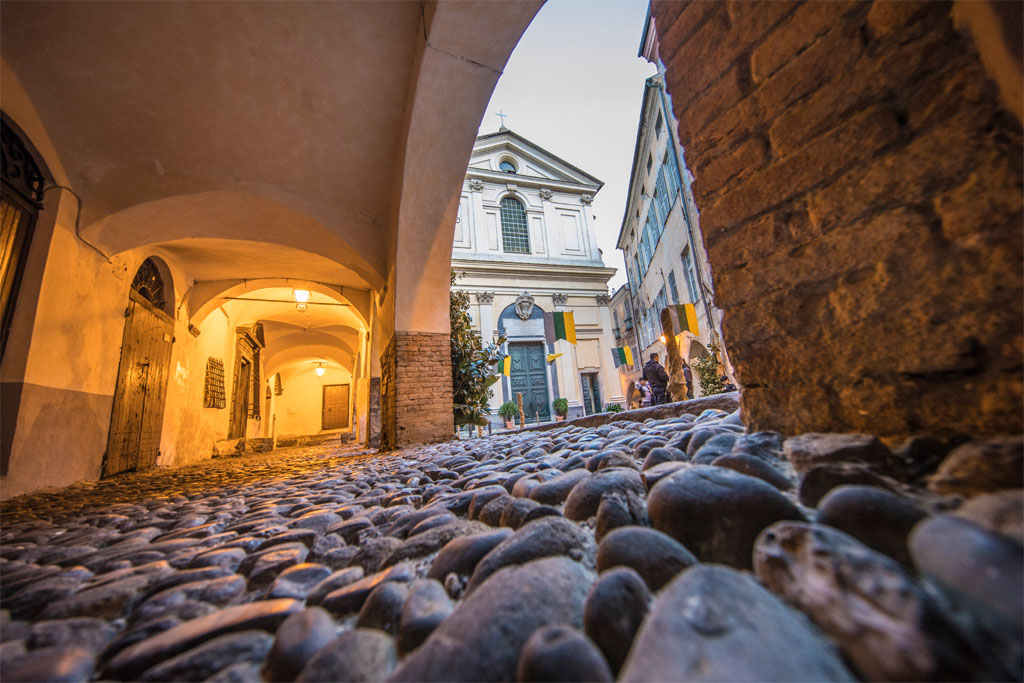
Another major sight is the Domenican Monastry built in 1490 with its gothic cloister, the impressive art gallery Ponente Liguria and the precious treasures inside the Monastery Chapel. The cloister patio is a particularly peaceful place, with a 600 year old olive tree standing right in the center. The monastery regularly hosts spiritual seminars and offers overnight accommodation. For a 5 Euro donation towards the upkeep of this remarkable building, a monk will take you on an interesting guided tour around the monastery.

Even before the monastery was built, Benedict monks in Taggia came up with a major culinary contribution: The “Taggiasca” olive, named after its place of origin Taggia, is one of the most popular and precious olives all over the world. The Benedict monks started cultivating this olive from the 11th century as they found this to be a variety strong enough to survive in a rather barren landscape. The colour of this olive varies from beige to dark brown and its fruity aroma is much loved by gourmets all around the world. The Taggiasca olive is still being cultivated and sold all over Liguria and the landscape marked by the endless olive groves at 400 – 700 m above sea level, has not much changed over the centuries. In order to plant olive groves on the sloping hills, the land was carefully terraced and supported with natural stonewalls.

Here and there small stone buildings were erected using the same ancient building technique and used as storage for tools or places to spend the night. They are referred to as ‘Rusticos’ and are popular with many fans of Liguria.

“GOOD TO KNOW”
The Art behind Traditional Ligurian Buildings

“Maixei” – the Ligurian Dry Wall
The history of the dry wall “Maixei” or Latin Mazeries dates back to the iron age around 1000 BC. The sloping hills and mountains so typical for the Ligurian landscape, were difficult to cultivate and the farmers had to find ways to create wide steps and terraces, which then needed strong supporting measures. So they erected dry walls made up of large local and often square stones, which they wedged into each other with their bare hands. This building technique had the advantage of using the strongest of building material at zero cost that did not need transporting, was water permeable and could withstand the at times heavy rains. To this day, these dry walls still characterize Liguria’s landscape and are an example of using natural resources to create a highly efficient architecture. If one were to create one long line out of all Ligurian dry walls, it would be longer than the Chinese wall. The walls are also a self-sustained eco system and home to many animals and plants. This is why more than 30 Million Euros were made available by the region to protect and maintain the Ligurian dry walls.

Rustici – the Houses of Old Times
The word ‘Rustico’ originates from the Latin word rus – landscape. The Italian word “Rustico” describes one of the most beautiful and popular building genres in Italy.
The Rustico defines a structure closely associated with country living and became popular before the times of industrialization when all buildings where in some way connected to rural living.
But even some contemporary buildings fall under the category “Rustico’ as they contain elements of the ancient building technique and integrate seamlessly into the surrounding landscape.
A typical Rustico is defined as a free standing house with an open focal room and a façade created out of unrendered stone. It features stone materials, wood, brickwork, a cistern antique terra cotta flooring.

Town Architecture in Liguria – A Medieval Revolution
Following the Romanizing and introduction of autonomous town authorities in the 12th century, a new building category could be found in Genova and other towns. The new houses saw stronger chalk walls introduced, which could be built to greater heights and depths than was previously possible. Over the following two centuries this technique was further developed and despite the many changes following the middle ages, it still is the basic structure of many historic centers in towns all over Liguria.

The houses have a rectangular layout with the narrow side of 5-7 m and up to two window axis facing the main road. These houses could be twice the size lengthwise and it was the custom to build a number of adjacent houses with a shared wall in order to create a block. The main road would often run along the harbor and was home to many artisan shops and businesses. This is why the ground floors of these houses were often used as shops, storage spaces or commercial enterprises.

From the discreet entrance doors on a side mews or the shop, a steep staircase led up to the first floor with living room, or formerly known as “caminata” which could take up the entire first floor. On the upper floor levels were the bedrooms, a small kitchen and a commode where to carry out sanitary necessities. All floors were made of wood and slate to cover the roofs. Depending on the economic status of the family, these houses allowed for astonishing levels of domestic autonomy.
All village houses
All rusticos

TERRA ITALIA’s Restaurant Recommendation:
Ristorante Apricale da Delio

Our autumnal restaurant recommendation is situated in the picture perfect village of Apricale.

Da Delio is an excellent restaurant in the stunning setting of the Ligurian Hinterland surrounding Ventimiglia. Sitting on the terrace under chestnut trees or at the panoramic windows, sweeping views as far as the eye can see await you. Da Delio only uses local produce, combining traditions handed down the family with refined contemporary elegance.


We highly recommend a combination of following three starters:
Cappon Magro with vegetables, rabbit with tuna and stockfish salad with sun-dried tomatoes perfectly represent the delicate Ligurian aromas. All pasta served at Da Delio is home made and combined with what the season has to offer. A popular autumnal dish is the “Ravioli di Preboggion”, served with pumpkin ragout. Given the restaurant’s popularity, it is advisable to make a reservation.


Piazza Vittorio Veneto 9
18035 Apricale
Tel.: +39 0184 208008
Email: info@ristoranteapricale.it
Opening Times: Wednesday to Saturday 12.00 – 14.00 and 19.30-21.30
Out of season the resaturant is closed Mondays and Tuesdays
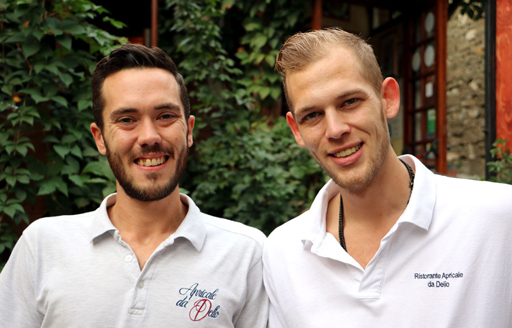
Cooking time: 120 min
Rating: simple
Today we would like to introduce you to the Ligurian Minestrone, a soup using a wide selection of vegetables, made that little bit more special when adding Pesto Genovese.

List of ingredients for 4 people
3 Potatoes
150 g fresh Borlotti Beans
1 slice of pumpkin
1 carrot
1 stick sellery
1 leek
100 g green beans
50 g leaf spinach
1 bay leaf
4 Table spoons Pesto Genovese
Extra Virgin Olive Oil
Salt, Pepper
Method
The Borlotti Beans form the basis to the recipe. Peel the borlotti beans, add the bay leaf and put into a large pot. Cover with water and cook for at least 40 minutes. The bay leaf adds to the aroma and helps to better digest the beans.
Wash, dry and peel the sellery, pumpkin, potatoes and carrot and cut into dices. Chop the leek and add to the pot with beans. Remove the bay leaf, add some salt and cook for another 40 minutes.
Wash and cut the spinach and green beans and add to the vegetables. Cook for another 20 minutes.
Once all is cooked through, take the pot off the heat and allow to cool down a little. Then add the Pesto and mix under the Minestrone to distribute its aroma.
To serve, add a glug of Olive Oil and add some pepper.
Serving Tip
To add a little extra flavor, you can serve the Minestrone with grated Pecorino Romano or Parmiggiano. And for some extra substance, add some pasta towards the end of the cooking time. The Minestrone should be eaten within the day.
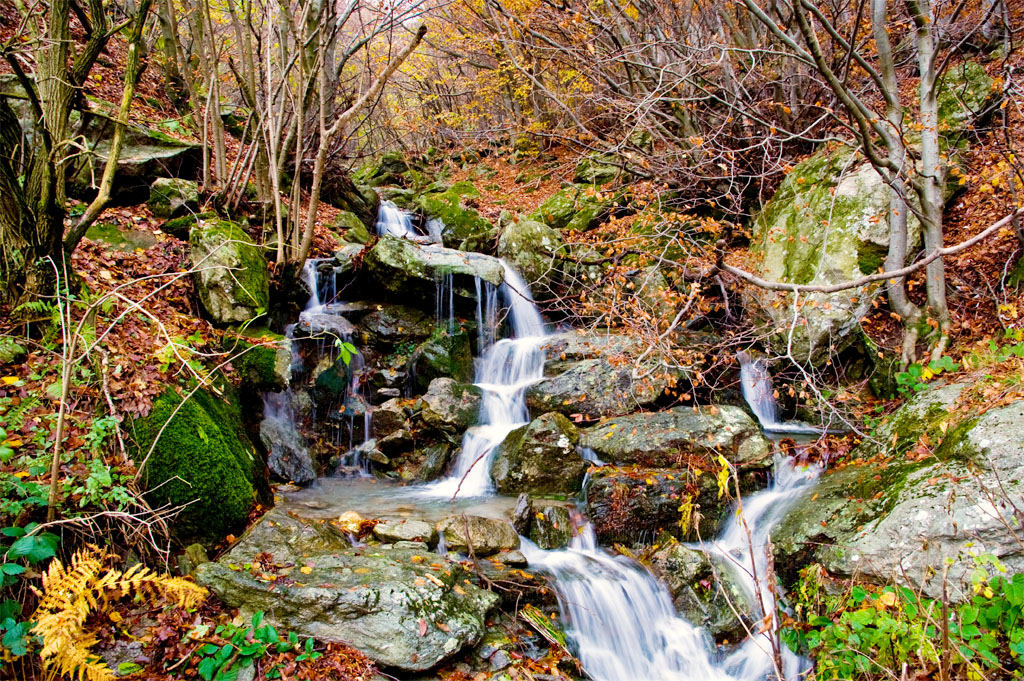
Barbagiuai
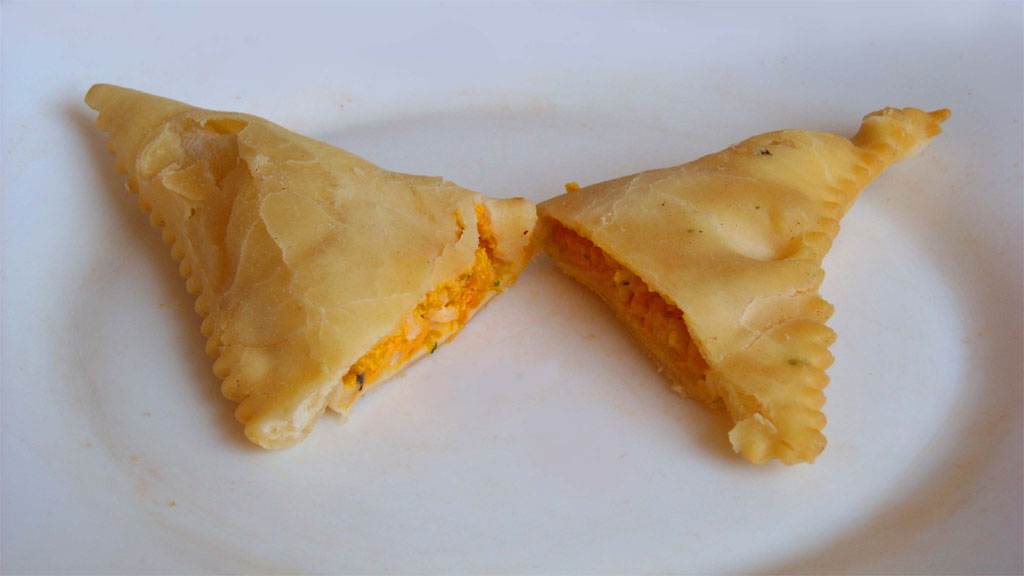
During autumn, the delicious “Barbagiuai” Ravioli stuffed with pumpkin, rice and cheese can be found all over Liguria. Once fried, they are soft on the inside and crisp on the outside. The contrast between the sweet pumpkin and strong aroma of the “Brussu”, a fermented Ricotta variety adds a wonderfully special taste.
Barbagiuai are essential to the traditional Ligurian cuisine and make a perfect warm starter. They are typically found in the Val Nervia in the Hinterland of Ventimiglia. Every year the town of Camporosso holds a festival in honour of this delicacy.
Creamed Pumpkin Soup

This delicate soup is made from the pumpkin variety growing in the area surrounding Albenga. Enriched with traditional aromas, it reflects the glowing autumn colours and served with Triora bread, Taggiasca Olive Oil, local potatoes and Vessalico garlic brings out the best of Ligurian cuisine.
Chestnusts – cooked or roasted? There’s more!

Chestnuts are the ambassadors of autumn and can be used in so many ways, be it sweet or savory, rustic or more refined. They can make a starter as well as a dessert, they can be dried or used fresh from the tree. We want to show you some traditionally Ligurian chestnut recipes.
Chestnut soup with autumnal Flavourings

A traditional recipe from the Val Polcevera. Simple to cook and great in taste.
Trofiette made from Chestnut Flour with Pesto and Broad Beans

Trofiette is a chestnut coloured pasta with twisted ends and in combination with herbs such as pesto and basic ingredients it perfectly absorbs the special aromas of the Ligurian Hinterland.
Roast with Chestnut Broth

Chestnuts are the prefect addition to veal, pork or turkey roasts. The sweet flavor and floury chestnut broth go well with tender slow cooked meat. This is also a popular dish served during the Christmas season.
Chestnut Pudding
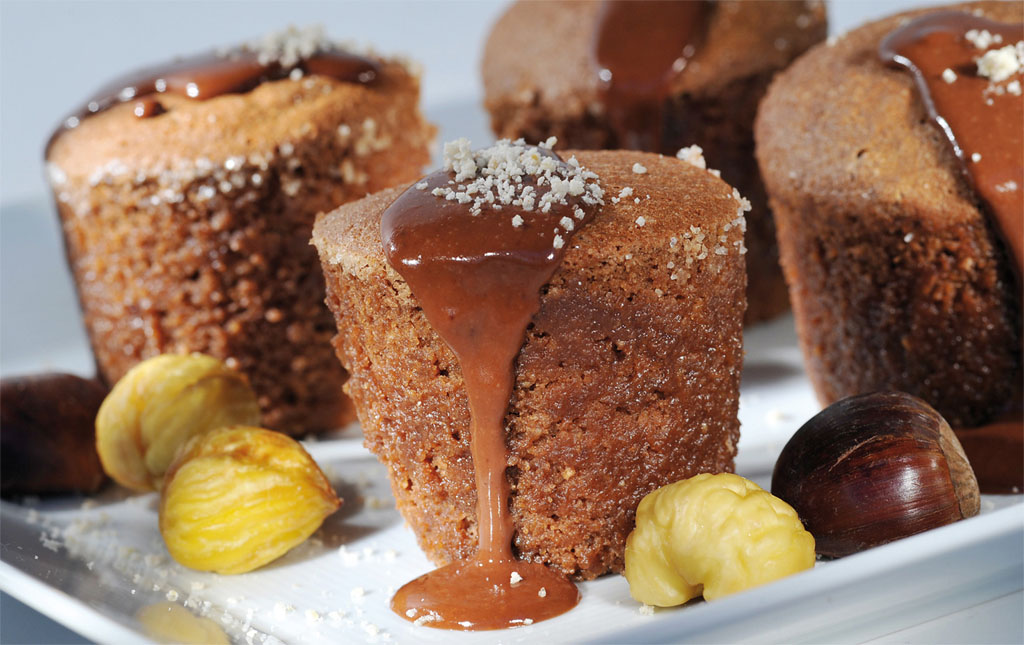
Chestnut Pudding is a traditional autumnal dessert served throughout the Ligurian Hinterland rounding up a festive lunch. It is delicate, delicious and irresistible.
Castagnaccio – Ligurian Chestnut Cake

This popular cake often served at weddings and other festivities is a quintessentially Ligurian treat made with chestnut flour, pine kernels and raisins.

This extraordinary route starts at the small Chapel of Madonna della Neve in Ciaixe at a small pink church dating back to 1436 and crouching on the verge of an old olive grove. Heading out on the rural track, it leads to the Alta Via in the direction of the Baraccone Mountain.

At around half way level, a sunny path lined with rosemary shrubs carries on into the Roia Valley. At a mountain ridge the choice between two different hiking routes has to be made to either climb up to the top of the Baraccone mountain and be rewarded with stunning views across the Roia and Nervia Valley or follow the path straight down through breathtakingly beautiful nature.
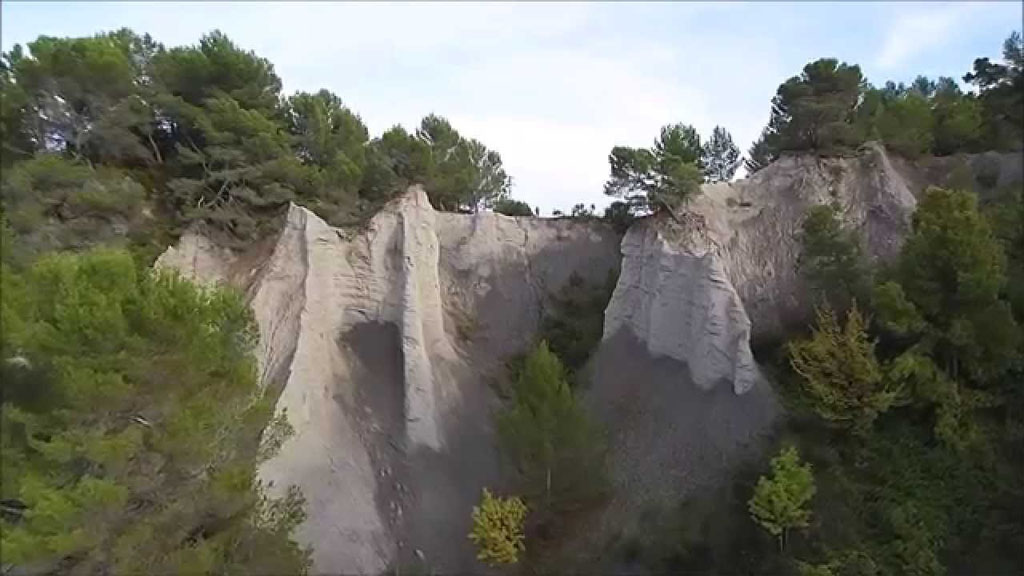
At the foot of an ancient vineyard the Terra Bianche Gorge will open up in front of you, with a magical atmosphere hanging over the white towers formed by nature. A rewarding view worth every effort.

Charles Garnier once nominated this walk to be “one of the most exciting walks” in Bordighera and described it as a “sequence of elegantly harmonizing corners and shapes”. The walk so enthusiastically described by Garnier is the ancient aqueduct canal (Bodéo), which used to supply homes, oil mills, public wash houses, gardens and fruit orchards in the lower town of Bordighera with fresh water.

The walk starts right behind the upper town (heading towards Via dei Colli), goes through a tunnel and follows an ancient mule trail up into the Sasso river valley. In parts it trails along terraces supported by dry walls and meanders through groves planted with mimosas, olive trees, palm shrubs and blossoming succulents. Whereas the first half is dominated by coastal views, the second half turns land inwards and ends in the small hamlet of Sasso.
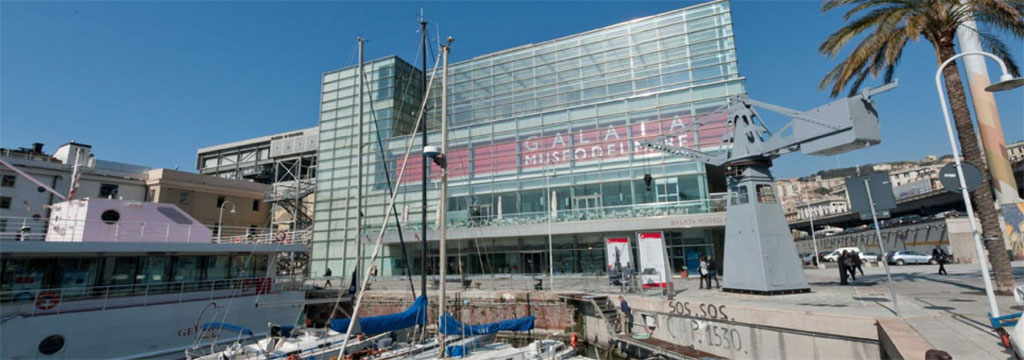
Genova can pride itself with the largest Maritime museum in the entire Mediterranean. The “Galata – Museo del mare” is part of the Porto Antico and situated right on the waterfront. The interactive museum is technically equipped to the latest standard and was opened in 2004. Some 4,300 exhibits are displayed on 10,000 qm exhibition space, offering plenty of interesting facts to discover. It offers insights into the latest nautical inventions and many miniature models bring the history of seafaring to life. A model in the original size of a Genova Galley being one of the many fascinating exhibits. The museum features changing exhibitions, has a viewing platform and the largest aquarium in Europe.

It is the intention of the museum to not only bring its visitors closer to the theory of navigation, sailing and the sea but to also offer hands on experience with the “Try to Sail” program.
For those with an affinity to the sea or seafaring, a visit to the Galata Museo is a must.
For more information click on https://www.galatamuseodelmare.it

The MACI stands on the grounds of the Villa Faravelli and is home to the art collection of the architect Lino Invernizze. The collection was donated by his widow Maria Teresa Danè and contains the works of a number of Italian and international artists crucial to the artistic development during the second half of the 20th century.

Wandering through the rooms on the first floor, you will come across works by F. Kupka, the co-founder of the abstract art movement Orphic Cubism alongside Russo, R. and S. Delauny, S. Poliakoff, J. Albers, M. Bill, L. Fontana and E. Castellani.
To find out more about the MACI click on https://www.maci.art

This captivating exhibition inside the rooms of the Falcone Theatre inside the Royal Palace ‘Palazzo Reale’ introduces you to the interior architecture of the 19th century Genova. On display are samples of furniture, paintings, sculptures, drawings, ceramics, fabrics, glass and photos collected in Genova and surroundings during the 19th century. It takes you on a journey from Peters to Liberty and gives an insight into the trends and styles of that particular era.
https://wticket1.wingsoft.it/biglietteria/listaEventiPub.do?lang=it&codice=REALE-PLZ






